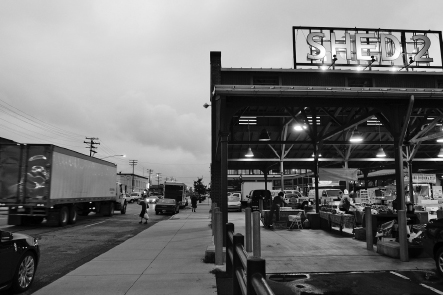
Eastern Market
THREE HUNDRED YEARS OF FARMERS MARKETS IN DETROIT
Saturdays in Detroit mean that it’s time to shop at the venerable and hugely popular Eastern Market, a destination drawing tens of thousands of marketers for more than 125 years. The market only seems to grow in popularity year after year. The nation’s largest public market, Eastern Market features produce, flowers and prepared goods from 250 regional growers and vendors, as well as surrounding blocks filled with a bakery, meat market, a sausage maker, an award-winning pizzeria, an open pit barbecue with the sounds of Motown karaoke, a seafood store, a wine shop, specialty gourmet shops, America’s “oldest corned beef specialist,” a halal slaughterhouse and numerous restaurants. The Eastern Market now draws forty to fifty thousand people on Saturdays and brings in $24 million in sales annually.
Eastern Market is the descendant of a long history of Detroit farmers markets that began in the early 1700s and blossomed in the 1800s. In the earliest markets, you could find French farmers and their wives selling garden produce, Ottawa Indians offering maple sugar and Canadian voyageurs hawking animal pelts to shoppers. The third ordinance of the City of Detroit when it was incorporated in 1802 was to establish a farmers market. (The first ordinance concerned fires; the second established the weight of a loaf of bread.) In one of the very early markets, near Jefferson Avenue, the sheriff erected a whipping post to help keep order. Before it was today’s Eastern Market, the area housed a cemetery and then a prison.

Detroit’s beloved Eastern Market at daybreak on Saturday, “market day.”
Eastern Market began as a hay market and wood yard, while produce, meat and other items were sold at the “Central Market” located at Cadillac Square downtown. In a push to beautify downtown, many complained about the ramshackle building and chaos of farmers, so in 1891, the downtown market was moved to the Eastern Market. A local historian and tour guide at Eastern Market, Dick Rubens, explained that “every Saturday, farmers, teamsters and customers arrived on 180,000 horses, each leaving thirty pounds of manure and six gallons of urine. Think about that the next time you complain about auto pollution!”
In 1899, Detroit ladies arrived at Eastern Market in coaches and carriages, their drivers in livery. Ten years later, the ladies motored themselves to market in a Detroit Electric Vehicle or were chauffeured. The poor did shop there as well, but they walked to the market, which did business all day and into the night.
By 1924, Eastern Market was said to be the largest farmers market in the world, with more than $5 million worth of produce changing hands. “Produce is now trucked in from a radius of 50 miles and sometimes more than 100,” the Detroit News reported at that time. “Celery from Kalamazoo, fruit from Benton Harbor, greenhouse products from around Toledo, berries from the Erie section near Toledo, truck crops from Canada are frequent sights.”
Eastern Market was declared a historic area in 1977 by the State of Michigan Historical Commission. Many of the original buildings are still in operation today.
SO BIG IT NEEDS A TOUR
Eastern Market is organized into a series of towering “sheds,” with sheds 2 and 3 seeing the most action on Saturdays. But other neighboring buildings also line the streets of the Eastern Market, some of which date to the turn of the century. Several of the old buildings were former breweries, such as the Detroit Brewing Company and E & B Brewing, and many proudly display beautiful tile mosaics. Artists from around the world come to paint their masterpieces on the venerable brick walls of the buildings in and around the market.
Other companies have established retail stores, such as Hurt Cheese, which has been in business at the market for more than one hundred years. Rocky’s Peanuts began with $850 as a peanut vendor at Tiger Stadium and then opened a storefront at Eastern Market. He built the business into a wholesale distributor of all kinds of food for southeast Michigan.
On Gratiot Avenue, which borders the market, is the Gratiot Central Market, a large indoor meat market, with its beautiful Victorian tiled white façade of cows; non-English-speaking new immigrants to Detroit had no problem understanding what was in the building when they saw that tiled front of animals. Down the street at the corner of Russell Street and Gratiot Avenue is Busy Bee Hardware, founded in 1918 and now run by the fourth generation of original owners. This is an active, busy hardware store, but with creaky flooring dating to 1924 and an original rope-pull elevator. Upstairs in storage is a treasure-trove of old goods, including mint-condition wood-burning stoves that never sold and are still in their original crates.
Many of the buildings along Gratiot have been refurbished and proudly display their original and stunning Art Deco façades. They now offer new apartments, lofts, restaurants and art galleries. As the cashier at the Busy Bee Hardware said, “Everybody is feeling more optimistic these days.”
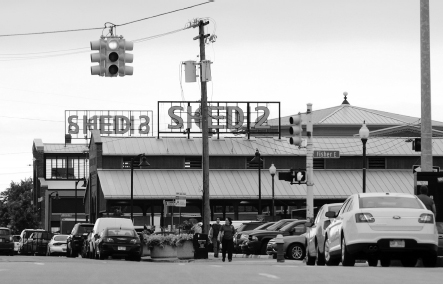
Eastern Market is divided into “sheds,” large open-air structures.
The nonprofit organization Preservation Wayne offers “heritage tours” of Eastern Market that can last up to two hours. Many people who take the tour are young, such as Julie Atty, who works in Dearborn, and Kevin Robisher, newly arrived from California but now working and living in Detroit. For them, this is a brand-new world that goes on and on.
A new generation of foodies is bringing new ideas and great food into the market. Supino’s Pizzeria offers hand-thrown thin-crust pizza based on Chef Dave Mancini’s trips to his Italian family hometown of Supino. Supino’s was voted best pizza in the city and has been drawing national attention. The Russell Street Deli has also received national attention from writers such as Mark Bittman of the New York Times, as well as a nod from Garrison Keillor. The green and yellow front of Russell Street Deli can’t be missed, and the deli packs them in for soup, burgers, corned beef and other favorites. It also has its own station at the Detroit Lions’ Ford Field.
BARBECUE AT EASTERN MARKET WITH JAZZ AND MORE
Eastern Market just isn’t complete without the smell of barbecue, soul food and Motown karaoke. Bert’s Market Place is on Russell Street. This is laidback, smoky fun. Patrons select their orders from a sandwich board menu and then sit at outside tables with their barbecued ribs, catfish, brisket, chicken, kielbasa and obscenely huge hamburgers. This is all done with Bert’s award-winning sauce. Since it does not use a dry rub, the barbecue is not spicy, and there is just a touch of sweetness. Lemonade is freshly squeezed as you wait. As people eat, they relax and watch pit masters work an enormous grill and listen to Motown classics. It’s become a market mainstay.
Bert’s at night and in the off season is a jazz club, started by Bert Dearing in the 1980s. Dearing turned an empty warehouse into Bert’s Warehouse, which is a huge space at the market for large productions and theater. On weekends, the Bert’s Market Place Jazz Club fills up fast. This club showcases locals and amateur jazz talent from across the country; however, some of the nation’s biggest talents have also shown up at Bert’s, such as Wynton Marsalis, Branford Marsalis, B.B. King, Chaka Khan, Betty Carter, James Carter and even Boy George.
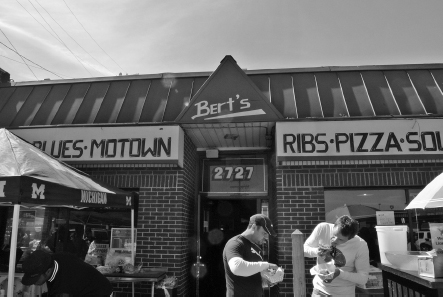
Bert’s, an Eastern Market favorite.
ROMA CAFÉ: EASTERN MARKET’S GRANDE DAME
Roma Café sits alone at the edge of Eastern Market. The small building with red and white striped awnings dates from the late 1880s, and today the restaurant holds on to a classic style with its low lighting, heavy carpets and intimate tables. The table service is formal, using older male waiters in uniforms that seem anachronistic. Roma Café was opened for business in February 1890 and is now Detroit’s oldest restaurant. Dining at Roma Café brings to mind an era when Italian restaurants in Detroit or elsewhere in the Midwest were either pizza parlors or cliché-loaded “Eye-talian” tourist spaghetti escapes. That was true of the restaurants where the food was mediocre and customers knew no better. That has never been the Roma Café.
The restaurant began when the Marazza family opened their home as a boardinghouse for traveling farmers at Eastern Market. Mrs. Marazza served her boarders hot meals, and the reputation spread that the meals were very good. With some urging, Mrs. Marazza changed the house into a restaurant and called it the Roma Café. The business was sold in 1918 but has been held by the same family, the Sossi family, for three generations.
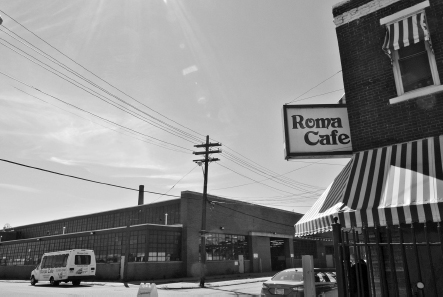
The Roma Café began by feeding farmers as they arrived at Eastern Market to sell their wares. It is now the oldest continuously operating restaurant in Detroit, with classic Italian cuisine. Roma Café was begun in the 1880s.
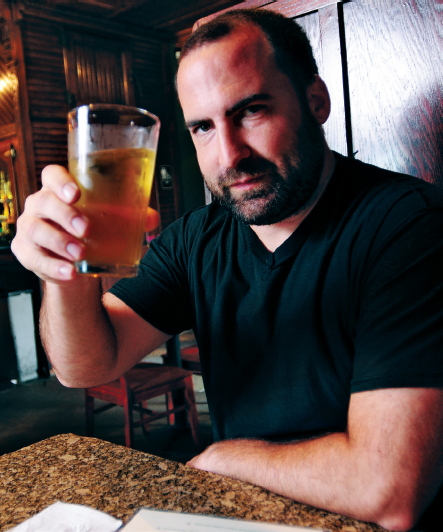
Jim Geary, owner of the Woodbridge Pub.

Detroit’s famous Coney Island restaurants.
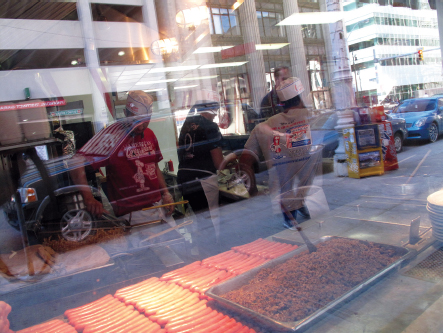
Detroit’s downtown Coney Island restaurants.
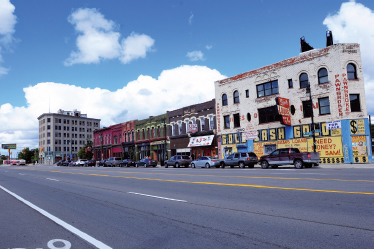
Corktown, Detroit’s oldest neighborhood.
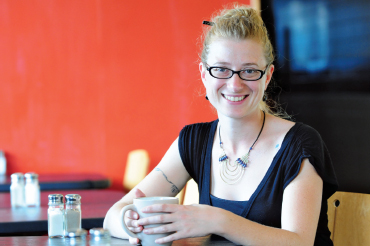
Deveri Gifford, co-owner of Brooklyn Street Local in Corktown.
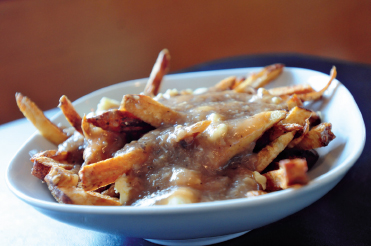
Brooklyn Street Local’s order of Canadian comfort food poutine (fries, cheese curd and gravy).
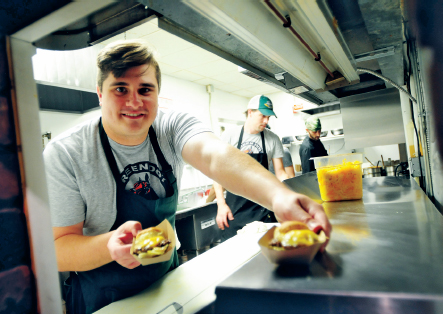
Corktown restaurant Green Dot Stables, with Chef Les Molnar.
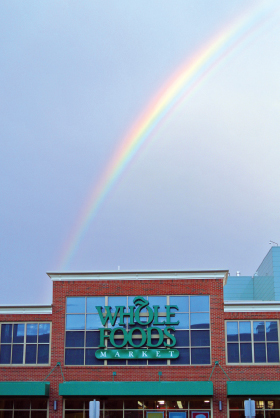
Whole Foods in Midtown, Detroit.

Chickens on the march.
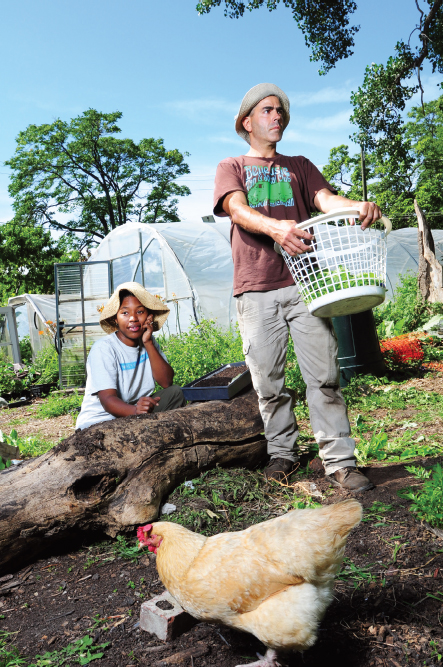
Greg Willerer of Brother Nature Produce.

Emily Brent, co-owner of Singing Tree Garden, located in Highland Park, Detroit.
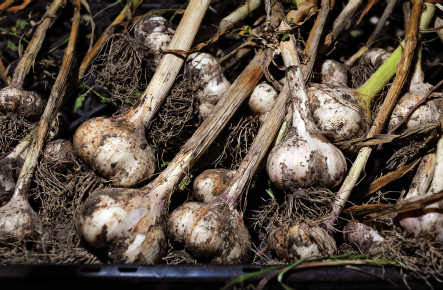
Freshly harvested garlic at Singing Tree Garden.
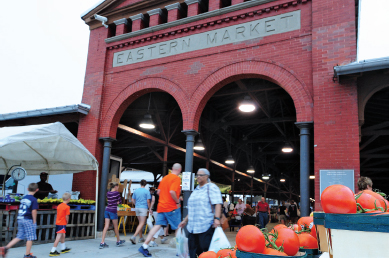

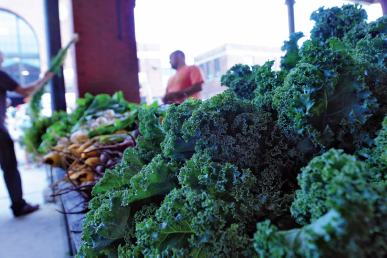
Entrance to Eastern Market on market day, as well as produce found there.
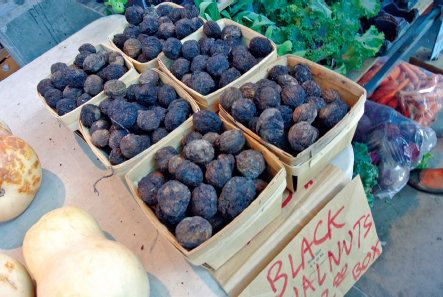
Produce at Eastern Market.
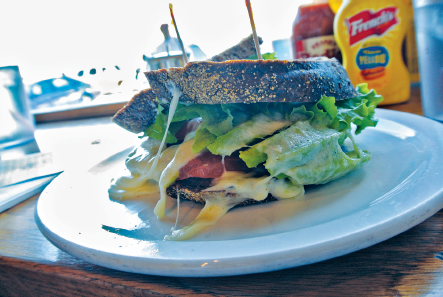
A veggie melt from Russell Street Deli at Eastern Market.

Eastern Market vegetables.
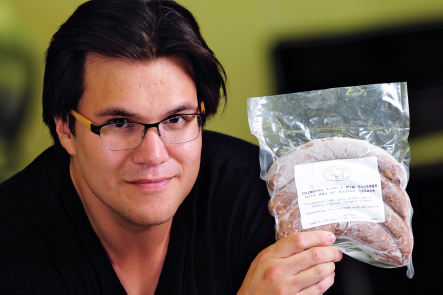
Will Branch, co-owner of Corridor Sausage, located at Detroit’s Eastern Market.

Joe McClure stands with his signature product, a jar of McClure’s Pickles. He and his brother, Bob, began their pickle business in Brooklyn, New York, but to expand, they moved the production to Detroit, where the McClure family is from.
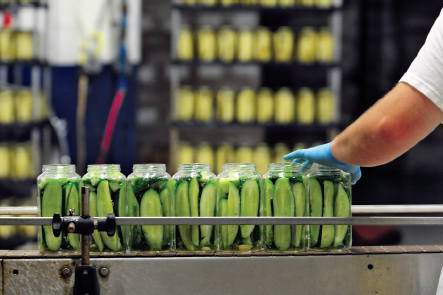
Pickles in process at McClure’s Pickles.

A Michigan draft craft beer at Ford Field for the Detroit Lion’s football game.
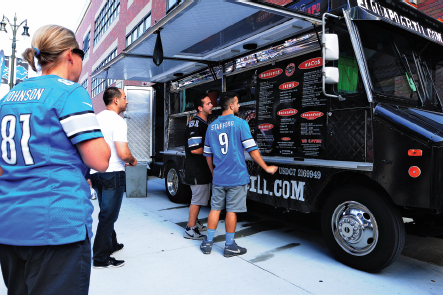
Fans enjoy the Detroit food trucks lined up outside Ford Field Detroit Lions games.

Daisuke “Dai” Hughes co-owns Astro Coffee with his wife, Jessica Hicks.
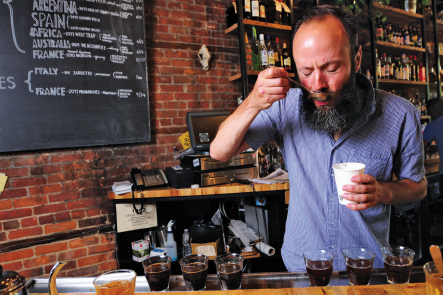
James Cadariu is the man behind the Institute for Advanced Drinking at Great Lakes Coffee Roasting Café, where he offers a “50/50,” a pint of cold-brewed coffee and Short’s ControversiAle.
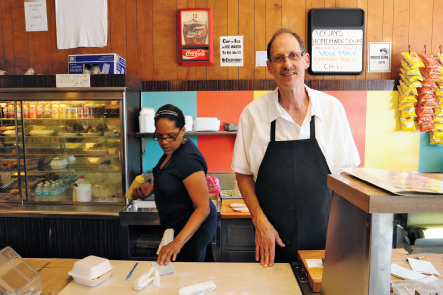
Stuart Litt, owner of Hygrade on Detroit’s Southwest side—arguably the best corned beef Reuben sandwich in the city.

Vernor on Detroit’s Southwest side.
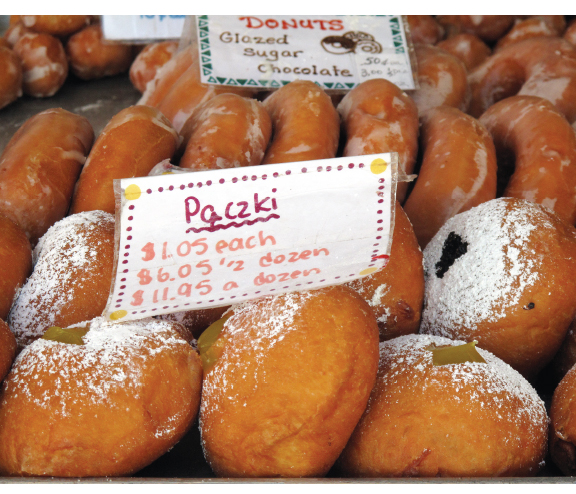
Paczki, a traditional Polish baked good in Hamtramck.
AFTER THE FARMERS GO HOME: EASTERN MARKET AT NIGHT
Eastern Market is also home to dozens of designers, artists and galleries that have studio spaces in or near the market, as well as apartments that line the narrow streets of the market. The Red Bull House of Art is located on Winder Street and describes itself as “an art incubation project and creative environment to develop new works and innovative ideas.” Inner State Gallery recently moved to the market district from former digs in Royal Oak, and the gallery/café/performance space Trinosophes on Gratiot is getting high praise from across the art world. Other businesses of interest include Robert Stanzler’s Detroit Mercantile Company, which offers “provisions for the urban pioneer.” Other interesting ventures include two creative print press operations: Salt + Cedar on Riopelle Street and Signal Return a few blocks away on Division Street.
So much is going on that in September, Eastern Market at night has begun to feel like market days. The sheds that normally hold farmers and food makers during the day feature at night studios, artists, workshops, performance art, fashion shows and music from groups like the fourteen-piece Afrobeat orchestra. This is at an annual event called Eastern Market After Dark, part of the Detroit Design Festival. The most recent Eastern Market After Dark drew two thousand people. Eastern Market is also promoting its Third Thursday night, which will have a focus on art and design and will feature a “chandelier” made from found objects from all over the city.
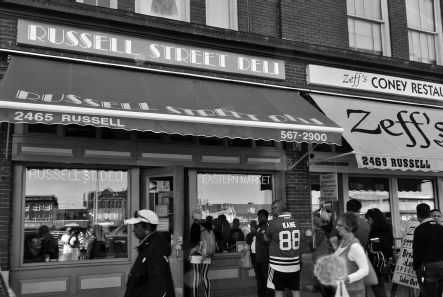
Storefronts on Russell Street inside the Eastern Market.